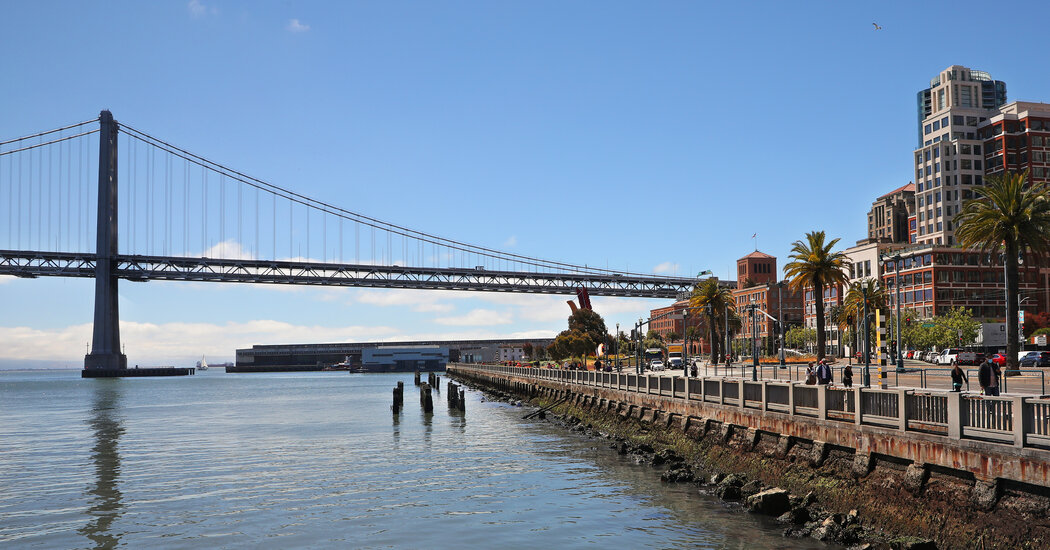
The Port of San Francisco (which manages 7.5 miles of the city’s waterfront, including the three miles buttressed by the sea wall) had assumed the wall needed upgrading, but it did not know just how direly until 2016, when officials released a preliminary study of the seismic vulnerabilities. Unlike some sea walls, San Francisco’s provides structural support as well as flood protection. The subsequent 2020 report detailed its weak points on both fronts. As climate change makes ocean levels rise, the sea wall will increasingly have to perform in a context it was not designed for. Given that an earthquake could strike any day, the port’s immediate priority is ensuring the sea wall’s integrity in such an event. But doing so also must consider sea level rise, and its uncertainties of how fast and how high. Risk mitigation decisions made now must allow for the unknowable.
Patrick King, who directs port and maritime work at Jacobs, the engineering firm managing the port’s resiliency program, articulates the urgent challenge of designing a future waterfront. “This infrastructure was built for a certain environment that no longer exists and is rapidly changing,” he said. And now, to the best of their ability, “We need to predict what that environment is going to look like.”
“Wall” is a generous word for the pile of rocks sitting on top of mud running along San Francisco’s northeastern waterfront. During the feverish early days of the gold rush, San Franciscans built the sea wall in a slapdash effort to establish some flat land at the edge of the hilly city. Horses were struggling to lug gold-filled wagons over the hills, and San Franciscans needed warehouses and counting-houses on level ground. Impatient for steam-powered shovels to arrive from across the country, residents began dumping into the marshland of Yerba Buena Cove whatever was on hand: loose sand, debris remnant from city construction, unwanted goods, trash, remains of abandoned ships. After a year, San Francisco had expanded three blocks into the Bay.
To rein in the construction chaos, the California Legislature established a Board of State Harbor Commissioners to create a harbor development plan. Construction of their first sea wall — essentially a rescue mission for the trashed harbor — began in 1867. A better-funded effort took off in 1878, and construction continued in stages over the next four decades.
Though longevity was not at the forefront of the undertaking, the wall still stands — long outlasting what anyone could have expected. And to some experts, this is worrisome.
“I would suggest that San Francisco has triple jeopardy,” Mr. King said: earthquakes, sea level rise and aged infrastructure.
Until now, the wall has mostly worked, though barely. In the 1906 earthquake, the sea wall shifted into the Bay, crumpling streetcar tracks, rupturing pipes and destroying homes. Entire stretches of street slid sideways; other portions dropped a couple of feet. In today’s city, a similar disaster would be even worse.
Average Rating